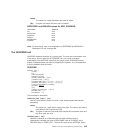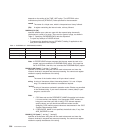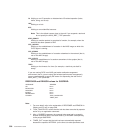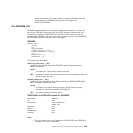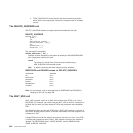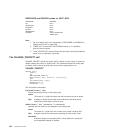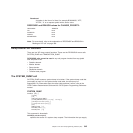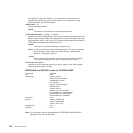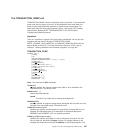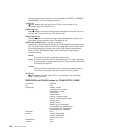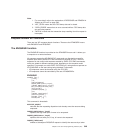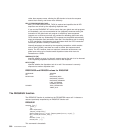MILLI_SECOND
The INTERVAL option specifies the number of milliseconds before
timeout.
WLM_WAIT_TYPE(name1)
specifies, in a 1-byte location, the reason for suspending the task. This
indicates the nature of the task’s wait state to the MVS workload manager.
The equated values for the type of wait are as follows:
CMDRESP
Waiting on a command response.
CONV
Waiting on a conversation.
DISTRIB
Waiting on a distributed request.
IDLE
A CICS task, acting as a work manager, that has no work request that is
allowed to service within the monitoring environment. For example,
journaling code that suspends itself when there are no journaling I/O
operations to perform.
IO Waiting on an I/O operation or indeterminate I/O-related operation (locks,
buffer, string, and so on).
LOCK
Waiting on a lock.
MISC
Waiting on an unidentified resource.
Note: This is the default reason given to the wait if you suspend a task and
do not specify the WLM_WAIT_TYPE parameter.
OTHER_PRODUCT
Waiting on another product to complete its function; for example, when the
workload has been passed to DB2.
SESS_LOCALMVS
Waiting on the establishment of a session in the MVS image on which this
CICS region is running.
SESS_NETWORK
Waiting on the establishment of a session elsewhere in the network (that is,
not on this MVS image).
SESS_SYSPLEX
Waiting on establishment of a session somewhere in the sysplex (that is,
not on this MVS image).
TIMER
Waiting on the timeout of a timer (for example, a task that puts itself to
sleep).
If you are running CICS in an MVS goal-mode workload management
environment (that is, you are using goal-oriented performance management),
you are recommended to specify the reason for suspending the task on the
WLM_WAIT_TYPE parameter.
Chapter 3. The user exit programming interface (XPI) 343



